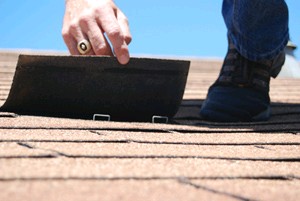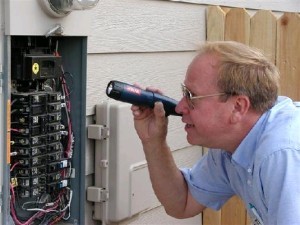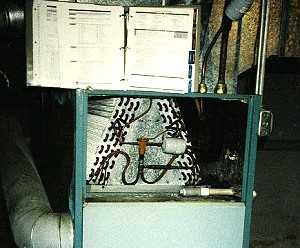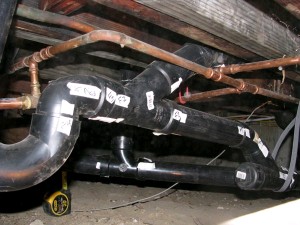
The Roof Inspection documents the age of the roof, the remaining useful life, missing or damaged flashing, leaks, sagging or damaged decking and rafter/truss systems or other age and maintenance items that need to be corrected. Disaster-Smart will perform a background permit search to establish the last date of replacement and perform a visual inspection to determine the answers for the above criteria. Any documentation you may have relating to roof replacement or maintenance is helpful.
Before re-roofing, you should be aware that there are upgrades (Code Plus) that can significantly reduce your windstorm insurance costs, for more information contact Disaster-Smart and we will help you create a scope of work for your roofing contractor that includes these critical upgrades. Problems that could require maintenance or replacement include: loose, cracked, deteriorated, damaged or missing roof covering and flashing; the presence of gravel roofs; curling of shingles or signs that the roof has reached its useful life; active leaks, holes or other damage resulting from damage, poor or improper installation and/or maintenance. Always use a licensed roofer and require a roofing permit with a roofing inspection to ensure these systems meet the minimum code requirements.
The electrical Inspection documents the size and condition of the main service, the condition of the main breaker and sub breaker panels, the type of wiring in existence, the presence of GFCI outlets in the bathrooms and kitchen, AFCI outlets in the bedrooms, and if there are any unsafe electrical conditions that need immediate attention.
Disaster-Smart will perform a background permit search to establish the last date of replacement or upgrade and perform a visual inspection to determine the answers for the above criteria. Any documentation you may have relating to electrical upgrades, replacement, or maintenance is helpful.
Problems that could require maintenance or replacement include: exposed or unsafe wiring, old fuse type systems instead of circuit breakers, inadequate or blocked access to fuse panels or breaker boxes, inadequate service loads, improper maintenance or wiring connections in the breaker panels, aluminum wiring, active knob and tube wiring systems, missing outlet and light switch covers or obvious code violations. Always use a licensed electrician and require an electrical permit and inspection to ensure these systems meet the minimum code requirements.


The HVAC Inspection documents the type of heating and cooling system(s), the age of each unit, and the overall condition. The outside unit(s) and inside unit(s) should have the manufacturer’s labels on them including a serial number that reflects the date the units were manufactured.
Disaster-Smart will perform a background permit search to establish the last date of replacement or upgrade and perform a visual inspection to determine the answers for the above criteria. Any documentation you may have relating to HVAC upgrades, replacement, or maintenance is helpful.
Problems that could require maintenance or replacement include: exposed or unsafe wiring, units older than 20 years in poor repair, dirty or missing filters needing replacement, improper vent stacks for gas furnaces. Always use a licensed HVAC contractor and require a mechanical permit when servicing or replacing systems to ensure they meet the minimum code requirements.
The HVAC Inspection documents the type of heating and cooling system(s), the age of each unit, and the overall condition. The outside unit(s) and inside unit(s) should have the manufacturer’s labels on them including a serial number that reflects the date the units were manufactured.
Disaster-Smart will perform a background permit search to establish the last date of replacement or upgrade and perform a visual inspection to determine the answers for the above criteria. Any documentation you may have relating to HVAC upgrades, replacement, or maintenance is helpful.
Problems that could require maintenance or replacement include: exposed or unsafe wiring, units older than 20 years in poor repair, dirty or missing filters needing replacement, improper vent stacks for gas furnaces. Always use a licensed HVAC contractor and require a mechanical permit when servicing or replacing systems to ensure they meet the minimum code requirements.

Copyright 2023© - Disaster Smart - All Rights Reserved®.